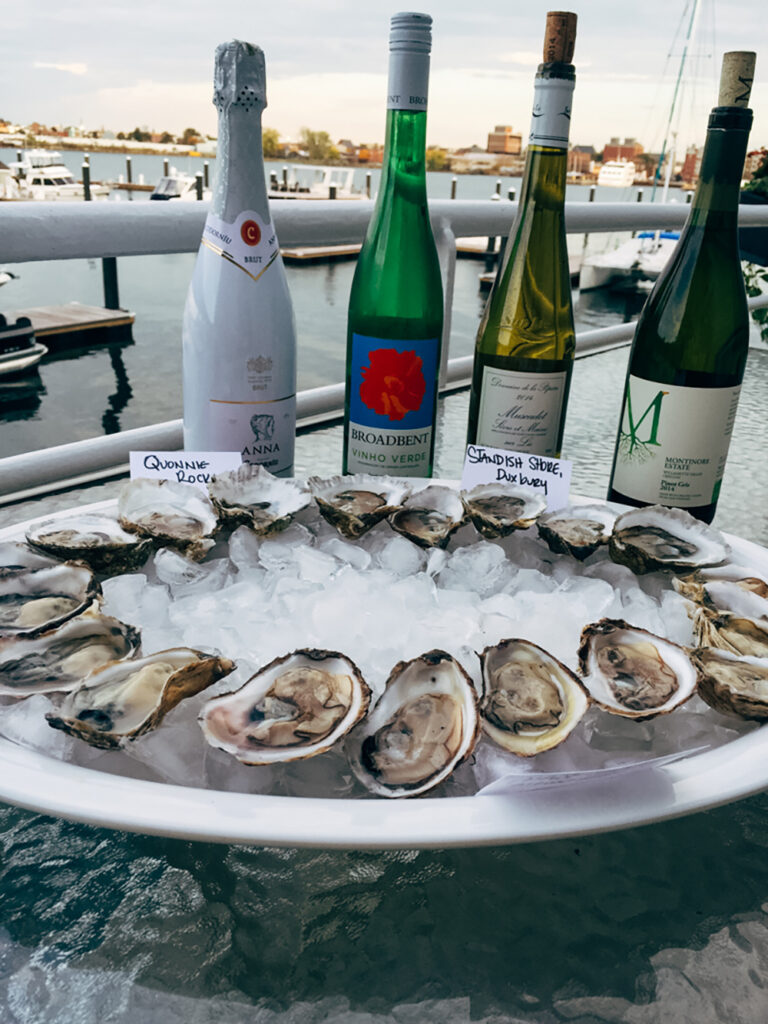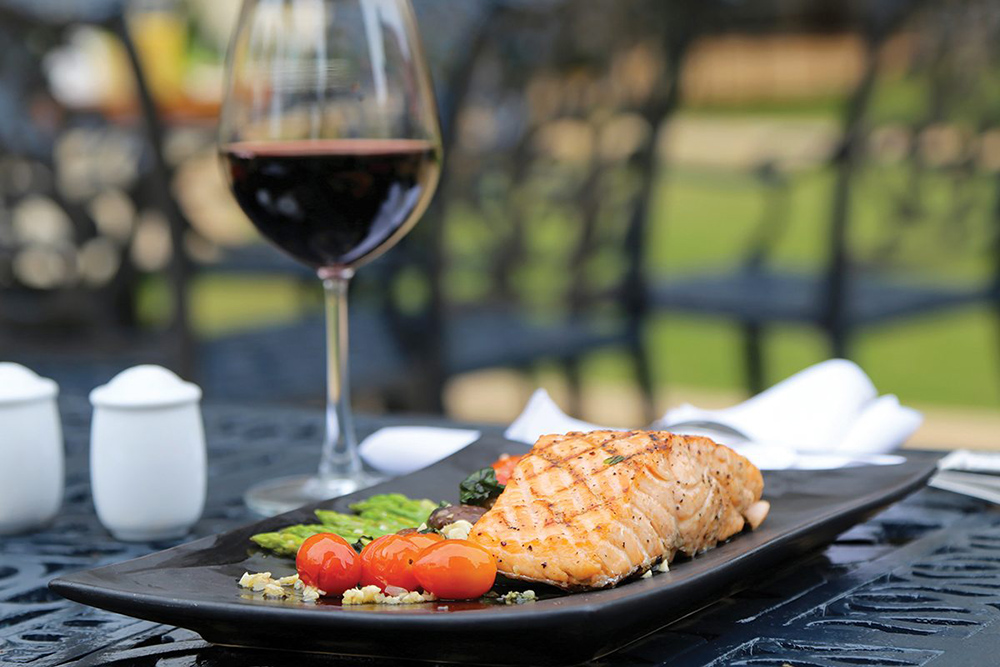Wine Time
By Nikki Myers
One of the most common questions I get in my line of work is about food and wine pairings. This is such a nuanced topic with intense amounts of science to back up the answers (all of which I’m happy to geek out about on request!) but I strive to make it as approachable as possible. Let’s tackle it, one food group, at a time. What better place to begin in the summer in a shore town than with seafood?
Typically, you’ll want to pair fish with white or rose wines. Reds tend to be richer and more tannic – both elements that will overwhelm the delicate flavors and textures of most fish. There are exceptions to every rule of course, but this is a good starting point when in doubt. If you’re going out and are unsure exactly what type of seafood you’ll be enjoying, I recommend a “safe” choice white wine: something that is not too extreme in any way, with moderate acidity and just a touch of residual sugar. The residual sugar is important because the cardinal rule of pairings is that the food must not ever be sweeter than the wine. If it is, your wine will taste horrifically bitter by comparison. Don’t worry if you’re not a sweet wine lover; wines with a small amount of sugar are not overtly sweet when well-balanced with acidity and structure. I recommend a wine made from Chenin Blanc grapes. You’ll find options like this from South Africa, such as Balance ($10.99), but others from France under regional names. One of my favorites is the Sauvion Vouvray ($17.99).

If you’ll be doing shellfish specifically, you’ll want something with a nice line of what we call “minerality” – that’s the dominant flavor in most clams, oysters, etc. Sancerre is especially lovely with these types of foods, hailing from the Sancerre region of France where it is frequently paired with local shellfish. Karine Luaverjat ($25.99) is an old favorite, but Mellot Moussiere Sancerre has quickly won my heart ($31.99). If you’re a raw bar enthusiast, you could never go wrong with a muscadet either. Try Bonnet Blanc ($16.99) next time you plan on having some oysters, and you’ll never look back.
The type of fish can totally impact the decision, especially with things like Salmon, which are much fattier and meatier than other fishes. Salmon even opens up the door for the red wines I told you to avoid (like I said, rules are meant to be broken!) – but still, stick to very light, low tannin varietals like Beaujolais or Grolleau (like Montgilet, $13.99).
HOW the fish is prepared can also make a difference. If it’s a scampi or a similarly richly-sauced dish, you could easily do a heavier white, like Chardonnay. Lobster smothered in butter also just begs for a creamy wine. Even lightly oaked Chardonnay is creamy enough to pack a punch next to these foods. Check out Valravn ($19.99) or Collovray et Terrier ($26.49). If you’re really doubling down on butter, give Harken’s barrel-fermented Chardonnay a shot ($13.99).
As with any food pairing, the most important thing is that you enjoy it! Don’t choose a wine pairing based on my recommendations even if it’s a wine you know you’ll hate, just for the sake of a “correct” pairing. The one thing I want everyone to do most is drink wine they love; rules be damned. Happy eating, and cheers!
Nikki serves as Event Leader and Educator at Passion Vines Wine & Spirit Company, which has provided her countless resources on her wine journey. She estimates that she knows approximately .001% of all there is to know about wine (most notably, the fact that there is an infinite amount of things to know about wine). Most nights, she can be found sipping quirky dry reds from obscure regions.





